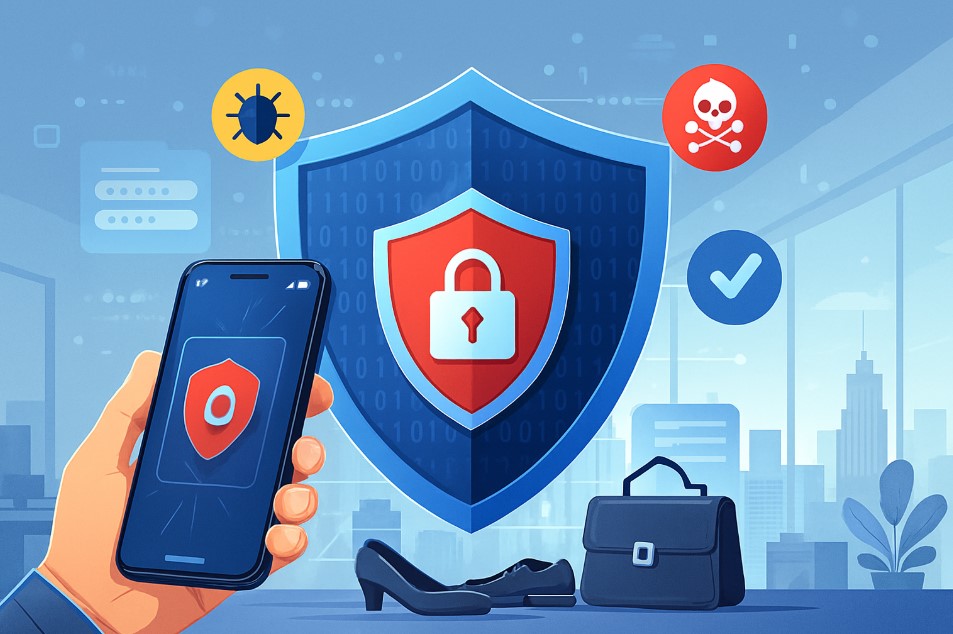Tech
Top Benefits of Mobile Threat Defense for Corporate Security

Mobile devices have become the foundation of the present business processes in the digitalized world. Remote work, a meeting with a client in the car, and so on, now a smartphone or a tablet is not only a means of communication but a mobile office with confidential corporate information. Nonetheless, there are serious risks associated with this convenience. The mobile threat defense has come to be a very important security solution that can safeguard organizations against the increased number of mobile-based cyber threats. Given such advantages, it is possible to enable businesses to make sound decisions regarding their mobile security approach.
1. Threat detection and response
Mobile threat defense systems also offer 24/7 monitoring systems that are deployed on corporate devices to detect any suspicious behavior. These solutions can study the pattern of behavior, network traffic, and activities of the applications with an aim to identify abnormalities that may mean a security breach. On detection of a threat, security teams are notified quickly, and the system itself can have the ability to put protection into place. This real-time reaction will hugely lower the time window of attackers to inflict damage. The proactive approach ensures that the potential threat spreads across the corporate network, and hence, business continuity and protection of important assets are maintained.
2. Defense Against Zero-Day Attacks and Advanced Malware
Conventional antivirus software usually experiences difficulties when it comes to keeping pace with fast-developing mobile malware. To detect threats that have not been identified before, the mobile threat defense systems employ sophisticated techniques of detection, such as machine learning algorithms and behavioral analysis. Such systems are able to detect malicious patterns even in recently developed malware that has never existed before. These solutions offer better protection against zero-day exploits because their code behavior offloading ability, instead of the signature-based weak handling, is utilized. The overall strategy provides companies with assurance about their mobile security posture since corporate mobile devices are safeguarded against threats they already know about and those they have yet to encounter.
3. Wireless Wi-Fi Protection and Network Security
During the day, mobile gadgets connect to several networks, starting with corporate Wi-Fi and ending with open hotspots and cell networks. Every single connection poses a security threat, especially when employees connect with unsecured public networks. Mobile threat defense solutions are constantly checking network connections and can identify man-in-the-middle attacks and rogue access points, among other network threat occurrences. These systems are able to automatically de-network dangerous networks and redirect the users to safer network alternatives.
4. Risk Assessment and Management of the Application
Mobile applications have become instrumental in the world of work in the modern workplace, especially when it comes to productivity, communication, and business activities. But not every application handles the enterprise security standards, and it is possible that some applications can have some vulnerabilities as well as malicious code. MTD engines conduct in-depth application risk analysis, including permissions required, data access logs, and certifications. These systems are able to detect risky situations and provide suggestions in lieu of their alternatives.
5. Averting Information Shedding and Retaining Confidentiality
Protecting the data of corporations cannot simply be entrusted to keeping off external attacks, but must also include instances of undesirable or intentional release of data by employees. Mobile threat defense applications are provided with solid data loss prevention capabilities that trace the flow of data and indicate the potential infringement of privacy. Such systems can raise an alarm when sensitive data is being sent to the wrong destination or when business data is under threat of leakage to anyone. This is achievable through carbonised policies that lead to data sharing that is not via a secure channel, viewing unauthorized uploads of the files, and complying with privacy regulations. This comprehensive data security initiative may help businesses avoid both losing consumer confidence and committing costly regulatory violations, and facilitating fruitful mobile security.
6. Management of Regulatory Compliance and Adherence
It is necessary to ensure that organizations in many industries need to focus on the stringent regulatory needs of data protection and privacy. The mobile threat defense systems help to ease compliance management by offering specific monitoring, reporting, and audit features. Such systems can automatically generate compliance reports, trace security meetings, and display compliance with the industry. The platforms have elaborate reports of all the security incidents and can be a source of demonstration of due diligence in handling sensitive information. It allows reducing the administrative workload of IT departments through automated compliance support, as the organization has to comply with the established rules and regulations and has the opportunity to receive fines.
7. Improved Awareness and Management of Mobile Resources
The largest issue of mobile security is ensuring the visibility of a greater number of devices and applications utilized all over an organization. Mobile threat defense solutions offer a central dashboard where the mobile security environment can be well understood. The IT administrators will be able to monitor their device status, detect security holes, and provide a policy to the whole of their mobile fleet. Based on these platforms, it is possible to implement data-driven security choices and manage trends and user patterns, as well as threats.
8. Cost-Effective Security Investment with Measurable ROI
Delivering mobile threat defense is a wise investment as it provides quantitative benefits in the form of decreased security breaches, increased efficiency, and decreased compliance expenses. The solutions allow organizations to mitigate the high financial cost of data breaches, which may comprise writ of law, regulatory fines, and expansion bills, reputation loss, and loss of business. Mobile threat defense platforms can minimize downtimes and reduce the need to conduct costly activities associated with incident responses because they protect mobile security events before they are distributed among every single user of an organization.
Conclusion
Mobile threat defense has been seen as the obligatory aspect of contemporary corporate security. The necessity of the various-purpose systems of mobile security will only develop as the significance of mobile devices in businesses continues to rise. The frameworks enable organizations to mount a strong protection against mobile threats, proving to be well placed to adopt mobile technologies with the assurance of keeping high levels of security.














